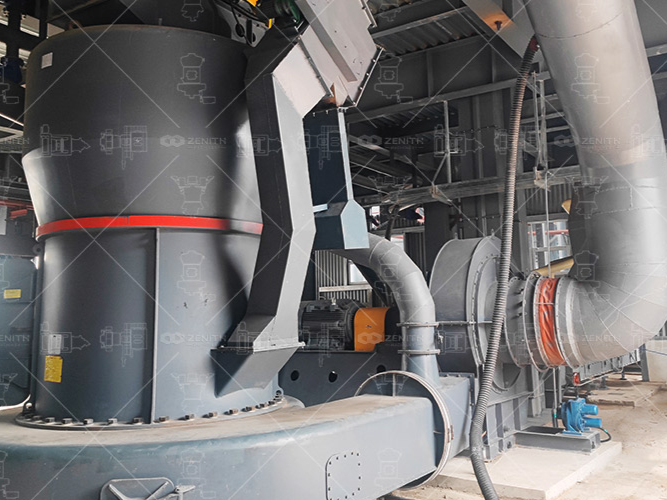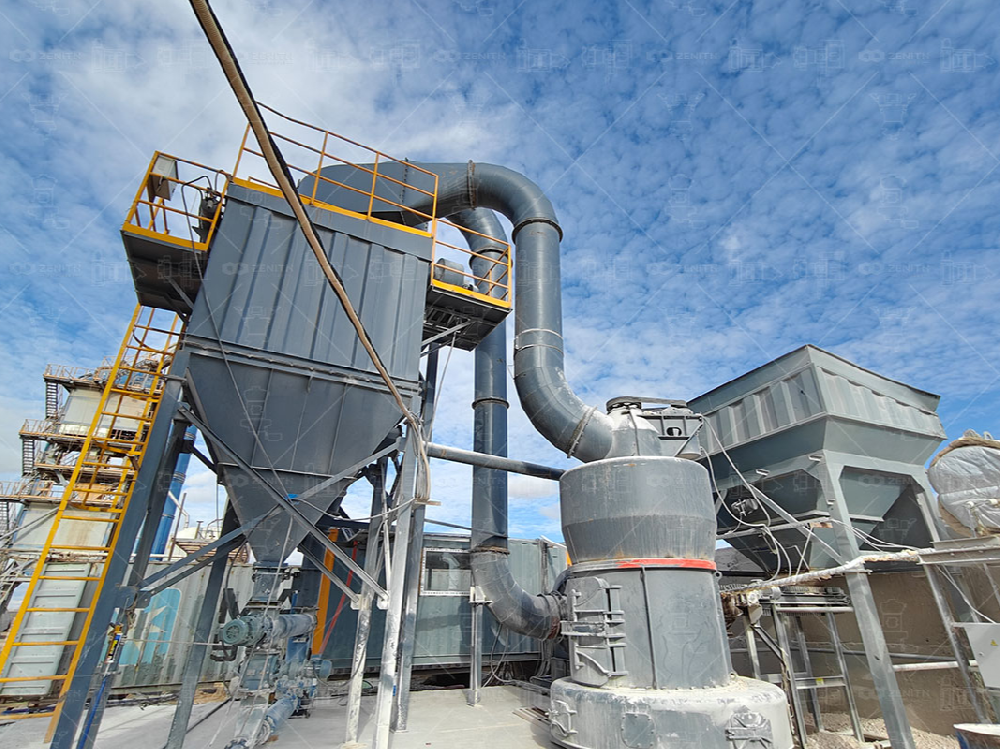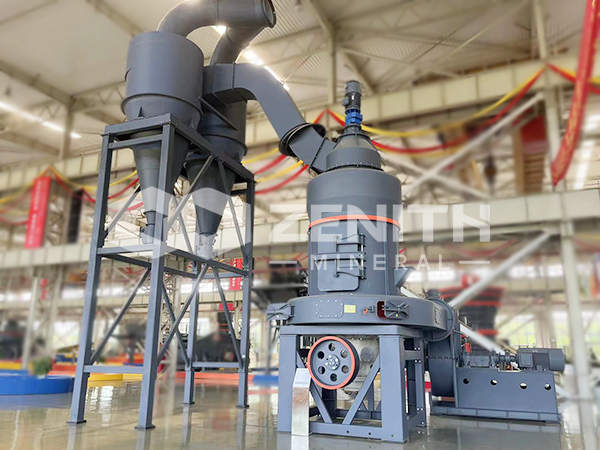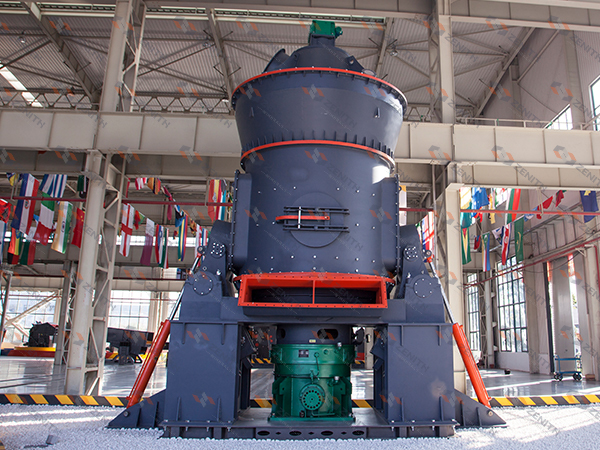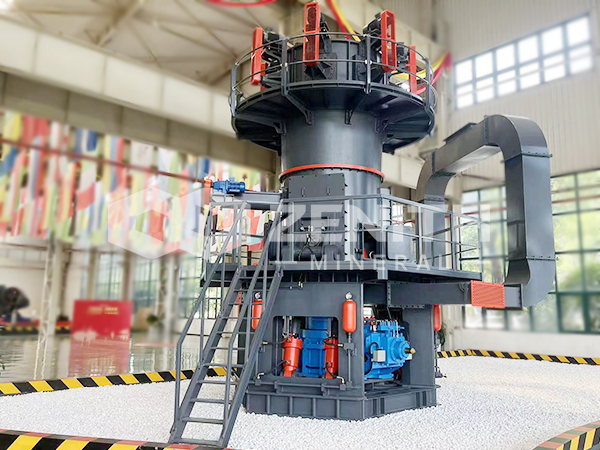Marble ultrafine grinding machine discharge fineness 20 microns for paint coating
2025-10-10 14:15:54
Okay, your need to grind marble to 20 microns (approximately 625-800 mesh) for use in paints and coatings is a very typical and demanding application. The paint industry requires not only fineness but also a concentrated particle size distribution, high whiteness, and stable chemical composition.
The following is a customized solution for you, including recommended mill types, key considerations, and selection advice.
### 1. Preferred Mill Type
For grinding marble to 20 microns (D97) for use in paints and coatings, the most popular and efficient equipment are the **Vertical Mill** and **Roller Mill**.
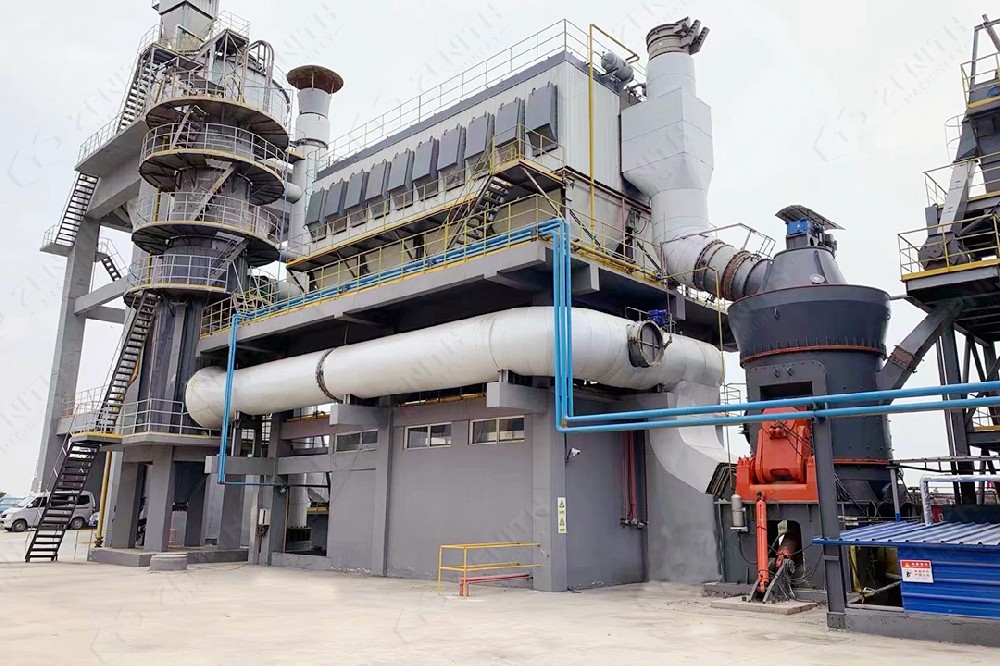
1. **Vertical Roller Mill**
* **Working Principle**: A motor drives the grinding disc to rotate, while the grinding rollers roll on the disc, crushing the material. Hot air enters the bottom of the mill, drying the material as it grinds. Qualified fine powder is carried by the airflow to the classifier above, while coarse powder falls back to the grinding disc for re-grinding. **Advantages**:
* **High Energy Efficiency**: Based on the compaction principle, energy consumption is 30%-50% lower than traditional ball mills.
* **Strong Drying Capacity**: Hot air can be introduced to simultaneously process trace moisture in the material, ensuring a dry product.
* **Easy Particle Size Adjustment**: By adjusting the classifier speed, the finished product fineness can be easily and stably controlled (20 microns is well within its optimal operating range).
* **Large-Scale Production**: High single-machine output makes it ideal for modern, large-scale production lines.
* **Application in Coatings**: The product particles are mostly flaky or angular, which helps improve hiding power and film strength in coatings.
2. **Ring-Roller Micro Powder Mill / Upgraded Raymond Mill**
* **Operating Principle**: This is an upgraded version of the traditional Raymond mill. The grinding rollers squeeze the grinding rings under centrifugal force. The crushed material is carried away by the fan airflow and enters the **Turbine Classifier** located above. By adjusting the classifier speed, precise classification can be achieved to obtain the desired product fineness.
* **Advantages**:
* **Moderate Investment Cost**: Lower initial investment compared to large vertical mills.
* **Precise and Controllable Fineness**: The built-in high-precision classifier is key to achieving a fineness of 20 microns.
* **High System Integration**: Integrates crushing, classification, and collection in a compact footprint.
* **Mature Technology**: Widely applicable market and easy maintenance.
* **Application in Coatings**: Ideal for small- to medium-scale production of coating fillers, achieving stable product fineness and excellent whiteness retention.
**Why Are Ball Mills Not Recommended?**
Although ball mills can also achieve this fineness, they consume extremely high energy, require long grinding times, are inefficient, and are prone to introducing iron contamination (affecting whiteness and chemical stability). They are no longer the optimal choice for newly built, modern plants.
### 2. Key Considerations (for the Paint and Coatings Industry)
When selecting equipment, be sure to clearly state the following requirements with the manufacturer:
1. **Iron Contamination Control (Most Critical!)**
* **Problem**: During the grinding process, wear between the metal rollers, discs, and rings in the mill generates iron chips that are mixed into the product. This can cause:
* **Paint color becomes gray or yellow, affecting whiteness and hue.
* **Reduced weather resistance of the paint**: Iron ions may catalyze resin degradation.
* **Solution**:
* **Wear-Resistant Material**: Require rollers, discs, and rings to be made of **high-chromium alloys, ceramic composites**, or **hard alloy overlay welding** to significantly reduce wear and prevent rust.
* **Magnetic Separation Device**: A **high-intensity magnetic separator** (iron remover) must be installed after the powder outlet to remove any trace amounts of iron that may have entered.
2. Whiteness Maintenance
* In addition to controlling iron contamination, the entire system (especially those in contact with the product) should be designed to be smooth, free of dead corners, and easy to clean to prevent cross-contamination between different batches.
* Use pipes and cyclone collectors lined with materials such as polyurethane and ceramic to reduce wear and adhesion.
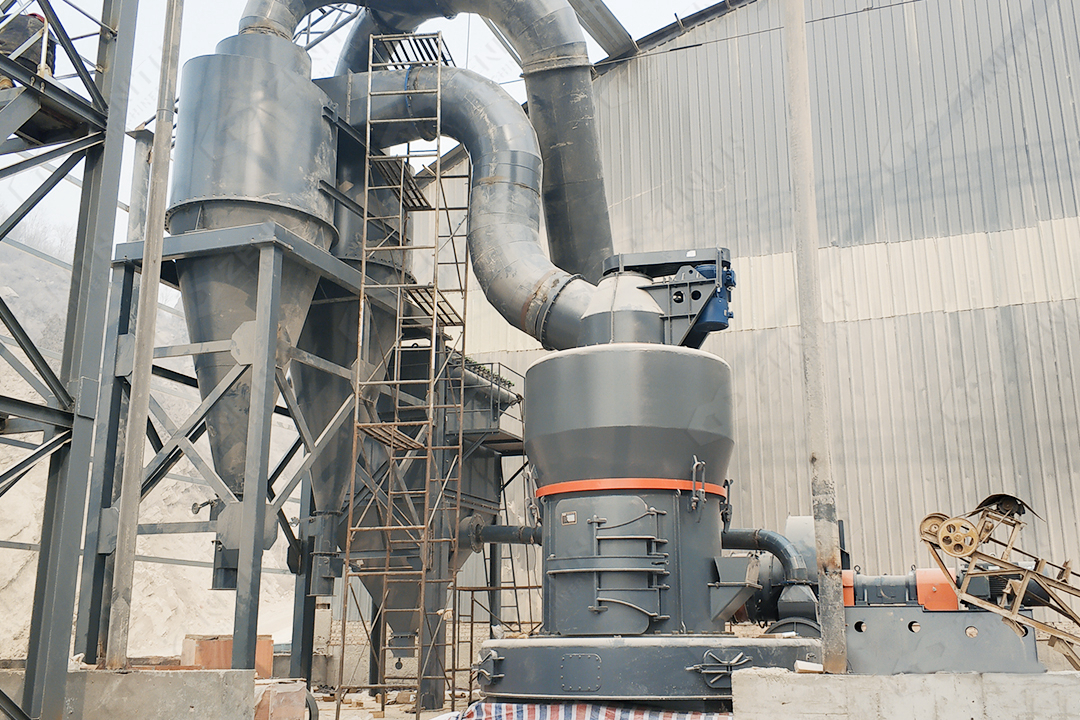
3. Fine Classification Capability
* The key lies in the turbine classifier. Ensure that the selected classifier has high precision, a wide speed range, and is capable of consistently separating products sized 20 microns (D97) and maintaining a narrow particle size distribution. Excessively coarse particles will affect the smoothness of the paint film, while excessively fine particles will increase oil absorption.
4. System Cleanliness
* The equipment should be designed for easy opening and cleaning, facilitating product changes or thorough cleaning.
### III. Recommended Manufacturers and Contact Us
Based on the above analysis, you can focus on the following types of manufacturers:
1. Leading Domestic Pulverizer Manufacturers (Preferred)
* These manufacturers offer mature technology, high cost-effectiveness, a deep understanding of Chinese material characteristics, and rapid service response. * **Key Brands**:
* **Guilin Hongcheng**:
* **Liming Heavy Industry**:
* **How to Contact**:
* Visit their official website directly and search for the "Ultrafine Vertical Mill" or "Ring Roller Micro-Powder Mill" product lines.
* Contact their sales department and clearly state your needs: "Marble, 20 micron (D97) discharge fineness, for paints and coatings, with strict requirements for iron contamination and whiteness."
* Ask them to provide successful customer case studies (preferably in the paint, plastics, or paper industries).
* Ideally, provide 1-2 kg of raw material for a free trial and have them provide a test report and equipment selection plan.
2. **International High-End Brands (If your budget is very sufficient)**
* Examples include Germany's **NETZSCH** and **Hosokawa Alpine**. These companies are global leaders in ultrafine grinding and classifying technology, offering high performance and reliability, but also come at a high price.
### Summary and Action Steps
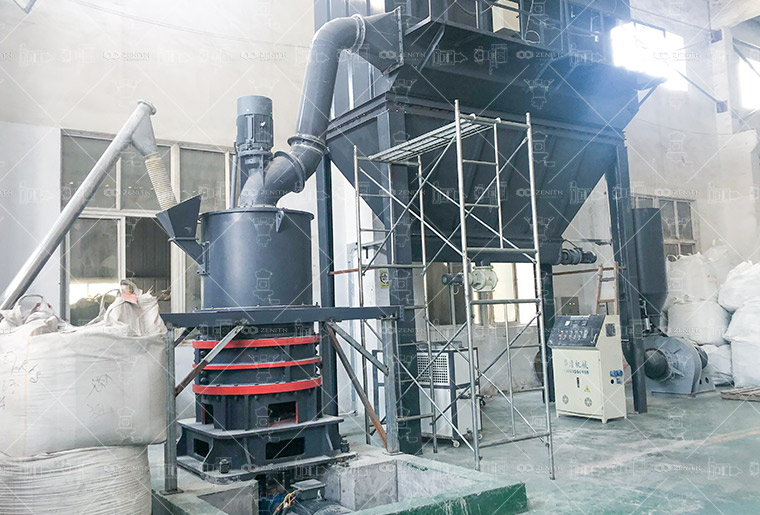
1. **Define Requirements**: Marble, D97 = 20μm, for paint and coating applications, with a focus on controlling iron contamination and maintaining high whiteness.
2. **Locate Equipment Type**: Focus on a **vertical grinding mill** or a **roller mill**.
3. **Find Suppliers**: Contact leading domestic companies such as Guilin Hongcheng and Liming Heavy Industry**.
4. **Request Tests and Proposals**: Send raw material samples for grinding tests to evaluate the finished product's fineness, whiteness, iron content, and other indicators.
5. **Key Inspection Points**: Carefully inquire about the wear-resistant component material and iron removal solutions, and request a site visit for a similar application.
By following these steps, you'll be sure to find the marble ultrafine grinding mill supplier that best suits your needs.



